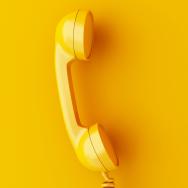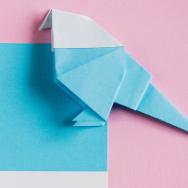Why do illusions feel real? What’s the science behind our decisions? Why is it so irresistible to judge a book by its cover? These are questions many have pondered, or even asked out loud. Often, however, they remain just that: questions.
Researchers at the Center for Decision Research (CDR) at Chicago Booth know these questions deserve rigorous scientific inquiry—and now, they’ve launched a space that can provide just that, while stimulating and entertaining visitors along the way.
Mindworks: The Science of Thinking is the world’s first lab and interactive museum dedicated to behavioral science. Located in the historic Railway Exchange Building—across the street from the Art Institute of Chicago—the one-of-a-kind destination welcomes visitors to experience firsthand how behavioral scientists do their work, explore insights from their research, and learn how their discoveries can help people design better lives.
“It is fantastic that a space devoted to the study of decision making and choice architecture is located in a building that is a landmark of that other kind of architecture,” said Richard Thaler, the Charles R. Walgreen Distinguished Service Professor of Behavioral Science and Economics at Chicago Booth, and 2017 recipient of the Nobel Memorial Prize in Economic Sciences for his contributions to behavioral economics. “After designing the building, David Burnham’s firm decided to move in themselves. We are thrilled to be able to showcase our knowledge there, across the street from the Art Institute, and we hope visitors will find the experience informative and fun. They can also help us learn new things about how we think.”
Free and open to the public, Mindworks depends on the public to participate in its empirical research experiments that seek to make new discoveries about the inner workings of our beliefs, judgments and choices.
“Mindworks will be a one-of-a-kind experience where people can learn more about how their own minds work and, at the same time, contribute to groundbreaking science as participants,” said Nicholas Epley, the John Templeton Keller Professor of Behavioral Science at Booth and faculty director of the CDR.
Reservations are not required for entry into the 2,500 square-foot facility at 224 S. Michigan Ave., Suite 102, but they are recommended. Organizers expect Mindworks to host more than 20,000 guests during its first year. Visitors will have the opportunity to participate in academic research experiments designed by scientists at the University of Chicago. For their participation, visitors will receive gift prizes such as canvas bags, T-shirts and vouchers to nearby cultural destinations, businesses and restaurants.
“We are excited to have created a public space that is dynamic, interactive, and intellectually rigorous,” said Madhav Rajan, dean of Chicago Booth and the George Pratt Shultz Professor of Accounting.
Visitors can take part in any or all of the eight current exhibits, which include “What Feels True” and “Design Your Best Life.” In the exhibit “How Do Our Eyes Fool Us?”, participants explore how the eyes (and mind) can play tricks on us by scrutinizing images of famous faces arranged both right side up and upside down. Upside down, many participants have trouble distinguishing key alterations to otherwise recognizable images. But once they view the faces in their common, right-side-up form, participants are able to notice important details that they originally missed—a phenomenon known as the “Thatcher Effect.”
Additional exhibits explore risk-taking and how well we know our friends—an amusing game-based demo, especially if you visit Mindworks with a friend. In “The Power of Regrets,” visitors will learn that (spoiler alert!) we often regret our actions in the short term, but regret inactions for much longer.
Mindworks is a continuation of the world-class research operations at CDR’s PIMCO Decision Research Laboratories. In the fall of 2018, CDR and PIMCO, one of the world’s premier fixed income investment managers, announced a partnership in support of the center’s behavioral science research, which included opening Mindworks to foster greater engagement with the public, increase the diversity of participants in research studies, and yield scientific discoveries with the potential to improve the lives of individuals and communities.
“Mindworks will be the only hands-on behavioral science lab in the world where you can both study and be studied simultaneously,” Epley said, “expanding research beyond the ivory tower, into our everyday lives.”
—A version of this story was first published by Chicago Booth.

